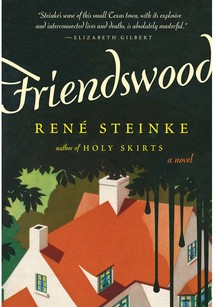In
Friendswood, René Steinke's masterfully observed third novel, the locals attend Baptist church and high school football games as in any other small, tightly knit coastal Texas town. But behind closed doors, each family lives with the fallout from an ecological disaster that caused some of them to abandon their homes in nearby Rosemont, where toxic sludge seeped into their ball fields and yards "in slick and oily, weird perfect coils," causing painful rashes, stillbirths and cancer.
The characters' attempts to grapple with the legacy of this destruction form the tender and harrowing heart of the story, especially now that a local millionaire is building homes on the contaminated site. After her daughter's death from a rare blood disease, Lee—a woman who has lost everything, including her former husband, who regularly drunk dials her to rehash the past—spends her days collecting soil samples in hopes of blocking the new development. In her weary determination there is a grace that keeps her going, even as so many around her wish she would just stop.
How we fail ourselves, how we confront those failures, and how we help one another attempt redemption—these are the novel's central issues, which grow more urgent as Lee and others turn to violence to advance their cause. The lush, tranquil setting only heightens the characters' inner struggles. Steinke has a painter's eye that turns a backyard pool "doll's eye blue." At sunset, a man's white T-shirt glows "phosphorescent in the dimness, as if he were trying hard not to disappear"; magnolia trees hold up their "white blossoms like lanterns." This is a place you live in as you read, drinking in "a faultless darkness" beyond the streetlights and noticing, as does everyone who passes it, the blue neon motel sign saying—perhaps pleading—"STAY."


